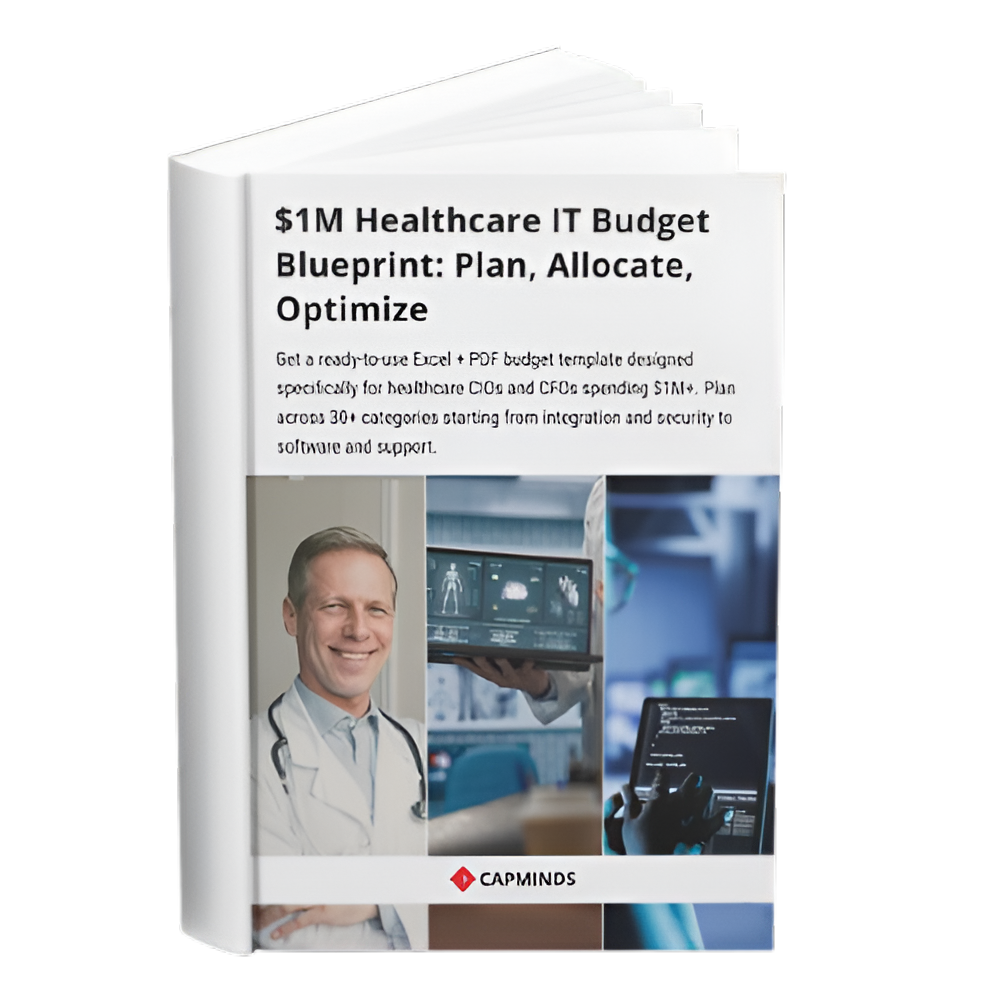How to Simplify Your Medical Claim Submission in 7 Proven Steps
Submitting medical claims correctly the first time is critical to practice revenue. 60 % of medical groups reported higher claim denial rates than the previous year, and the practices that saw reductions credited better staff training and creating denials‐task‐force teams focused on documentation, eligibility verification, and authorizations. The number of claim denials spiked by 60% in 2024. A clean-claim rate below 95% is concerning, and common reasons for denials include incomplete information, a lack of prior authorization, or duplicate submissions.
These patterns highlight the need for U.S. doctors and clinicians to have a purposeful claim-submission approach based on precision, proactive verification, and ongoing observation.
This manual provides seven tried-and-true procedures to make filing commercial, Medicare, and Medicaid claims easier. It highlights the function of EHR platforms, Medical billing software, and RCM systems and incorporates information from reliable sources, current U.S. billing standards, and revenue-cycle best practices. To reduce denials and speed up reimbursement, do these actions.
7 Smart Ways to Master Medical Claim Submission
1. Collect Accurate Patient Information During Registration
Many claim denials originate before the patient is seen. Practices experiencing more denials cited patient eligibility or incorrect ID numbers and untimely filings among the top reasons.
To avoid these preventable errors, front‑end staff should ensure that demographic and insurance information is correct and complete at every encounter.\
- Check payer information and demographics. Note the patient’s legal name, birthdate, address, phone number, and insurance numbers precisely as they are shown on the card. To make sure digits are not transposed, cross-check numbers.
- Scan documents and use EHR forms. To record registration details and scan copies of driver’s licenses and insurance cards, use electronic intake forms in your EHR. Future claims can be automatically filled out by integrated EHR/RCM systems, which also help to minimize errors in human entry.
- Train front‑desk staff. MGMA respondents who lowered denial rates credited staff training and dedicated denials teams focusing on eligibility and authorizations. Regularly train registration staff on common mistakes and keep them informed about payer policy changes.
- Confirm coverage changes at every visit. Patients’ insurance coverage often changes during the year. Ask about updates and verify coverage before each encounter; do not rely on information captured at a previous visit.
Accurate demographic capture lays the foundation for a clean claim. Modern billing software can identify discrepancies, like age or gender, that are incompatible with the procedure code prior to the claim being submitted, and EHR systems should enforce data validation criteria.
2. Verify Eligibility and Obtain Prior Authorization
Failure to verify benefits or secure authorization is a leading cause of denials. Practices with fewer denials concentrate on eligibility verification and authorization, while Physicians Weekly lists lack of previous authorization and procedure not covered by the insurer as common reasons claims are refused.
- At least 48 hours before the appointment, confirm your eligibility. Verification of eligibility should validate out-of-pocket maximums, copay obligations, benefit limits, and active coverage. In order to minimize last-minute surprises, it is recommended that coverage be checked 48 hours before each visit.
- Use real‑time verification tools. Billing software, clearinghouses, and EHRs all provide electronic eligibility verification that connects to payer databases. These tools quickly confirm active coverage and reveal referral or precertification requirements.
- Understand prior authorization requirements. While traditional Medicare requires clearance for a restricted selection of treatments, nearly 99 percent of Medicare Advantage subscribers must receive prior authorization for some services. Medical necessity is guaranteed by prior authorization policies, but if they are not followed, they may result in delays and denials. Verify whether authorization is needed before ordering expensive imaging, surgeries, specialty drugs, or out-of-network services, and get approval before performing the service.
- Check payer portals and maintain documentation. Many payers provide online portals to submit authorization requests, verify status, and download approval numbers. Document the authorization reference numbers and attach them to the patient’s chart and claim. If authorization rules change, update your billing system immediately.
- Reverify and confirm on the day of service. Coverage or authorization can expire between verification and the appointment; recheck benefits on the day of service to avoid using outdated information.
Related: Prior Authorization: The in & outs that make Healthcare more Secure
3. Capture Charges and Code Accurately
Once eligibility has been confirmed and authorization has been obtained, concentrate on accurately coding and documenting services. Delays and denials are caused by inaccurate or inadequate coding, especially when new code changes are deployed at the beginning of the year.
- Document the encounter thoroughly. Clinicians should record procedure codes, diagnosis codes (ICD-10), and modifiers that correspond to the services rendered. Codes are justified during payer adjudication when accurate clinical data proves medical necessity.
- Use up‑to‑date code sets and guidelines. Each January brings new coding guidelines, which can spur denials if codes are outdated. Regularly update your EHR’s code library and invest in coding reference tools or subscription services. Keep track of payer‑specific rules for modifiers, which MGMA identified as a common reason for denials.
- Implement charge‑capture technology. Modern EHRs integrate charge capture with clinical workflows, automatically pulling procedure codes from notes or orders. AI‑assisted tools can suggest codes and check compliance. Physicians Weekly notes that optimizing EHR technology, including AI assistants, can facilitate accurate data entry and code specificity.
- Train providers and coders. In order to decrease denials, invest in more coding staff, and offer education, MGMA promotes improved staff training and certifications. Inform physicians about the need for documentation and give coders the authority to seek clarification.
- Validate codes against demographics and payer policies. Practice management systems and claim editors should flag mismatches, such as a child receiving a geriatric procedure or codes that require gender‑specific patients. Build custom rules to halt these claims before submission.
4. Prepare the Claim and Run Pre‑Submission Scrubbers
A clean claim is processed without the need for extra information and is free of mistakes, omissions, and inconsistencies. A high clean claim rate improves cash flow, lowers administrative expenses, and raises patient satisfaction. It should surpass 95%. Preparation and scrubbing help achieve this goal.
- Assemble the claim using standardized forms. The CMS‑1500 form is the standard for professional claims in Medicare and most private insurance. The Revenue Cycle Management: The Art and the Science article emphasizes creating the claim with complete demographic, insurance, and coding information.
- Utilize claim scrubbers and automated edits. Claim scrubbers review claims for missing data, invalid codes, bundling issues, and payer‑specific rules before submission. Implementing claim scrubbers and automated editing tools as part of front‑end validation.
- Check provider credentials and attachments. Verify the accuracy and validity of the facility IDs, taxonomy codes, and provider National Provider Identifiers (NPI). As required by payers, include supporting documentation (lab reports, operative notes, and letters of prior authorization approval).
- Review for duplicate or overlapping claims. Duplicate submissions are frequently denied. Use claim management software to detect overlapping dates of service or duplicate line items.
- Fine‑tune your rules engine. Modern RCM platforms allow practices to customize edit rules and adapt quickly to payer changes. Update rules to reflect new coverage policies or payer communications and test them regularly.
5. Submit Claims Electronically via EDI
Once scrubbed, submit claims electronically through HIPAA‑compliant Electronic Data Interchange (EDI). The CMS Medicare Claims Processing Manual outlines the advantages of electronic claims: earlier payment, earlier detection of errors through electronic edits, ease of use, lower administrative and postage costs, online error correction, and availability of free software.
Submitting claims electronically also ensures compliance with HIPAA standard transactions and reduces cycle time.
- Select the appropriate transaction type. For professional claims, use the 837 P transaction; for institutional claims, use 837 I. Ensure that your EHR or practice management system creates compliant files.
- Use a clearinghouse or direct connection. Most providers use a clearinghouse to transmit claims to multiple payers. Clearinghouses run additional validation, convert file formats, and provide status reports. Some large payers allow direct EDI connections.
- Submit claims promptly. Filing deadlines vary by payer (often 90–180 days for commercial plans and one year for Medicare). Submit claims as soon as documentation is complete to avoid untimely filing denial.
- Monitor acknowledgement reports. Clearinghouses and payers issue acknowledgement reports indicating whether a claim has been accepted or rejected at the front end. Review these daily and address any rejections immediately.
6. Monitor Claim Status, Reconcile Payments, and Manage Denials
Claim submission is just one step in the process; ongoing oversight guarantees payment receipt and prompt resolution of denials.
- Track claims using payer portals and RCM dashboards. Monitoring payer portals to verify claim receipt and status. Many modern EHRs and RCM systems integrate claim tracking dashboards that display aging claims, missing responses, and denial reasons.
- Reconcile payments and review explanations of benefits (EOB) or remittance advice. Remittance processing involves matching payments to expected amounts and verifying that the payer’s explanation aligns with contracted rates. Post payments promptly and adjust patient accounts accordingly.
- Recognize denials and file an appeal right away. When a claim is denied, note the reason, fix any mistakes, and submit the claim again during the payer’s appeals window. appealing denials and monitoring the rate of denial appeals as a KPI. Create dedicated denial work queues and assign claims to coders familiar with specific payer rules.
- Analyze denial patterns. Keep an eye out for common denial grounds, including incomplete paperwork, problems with eligibility, or particular codes. Determine the underlying causes using analytics, then modify procedures as necessary. Examine trends in denials and underpayments, and forecast high-risk claims using predictive analytics.
- Maintain communication with the payer reps. MGMA places a strong emphasis on routine check-ins with key payer representatives to address systemic concerns and clarify evolving regulations. Resolving denials brought on by misunderstandings or out-of-date credentials is made easier by keeping solid relationships.
7. Use Data and Continuous Improvement to Optimize the Revenue Cycle
Enhancing the submission of claims is a continuous activity. Practices require strong data monitoring and quality improvement in order to maintain progress and adjust to regulatory changes.
- Observe the KPIs, or key performance indicators. Monitor KPIs, including the rejection rate, days in accounts receivable (A/R), clean claim rate, first-pass acceptance, and denial appeal success rate.
- Centralize and standardize processes. To cut down on handoffs, increase accuracy, and facilitate compliance, MDClarity advises standardizing claim workflows and centralizing data. Integrate EHR, billing, and document management systems into a single platform, and use standard templates and checklists for data collection, claim creation, and follow-up.
- Automate anywhere you can. Make use of claim scrubbers, automatic eligibility checks, denial classification, and underpayment detection. Make use of RCM platforms that offer predictive analytics and real-time insights by integrating with EHRs.
- Continue to educate people. Provide personnel with regular training on payer policies, coding updates, compliance needs (such as CMS and HIPAA regulations), and how to utilize billing and EHR software correctly.
- Clinicians should be involved in the revenue cycle. Physicians and clinicians should be encouraged to comprehend how their coding and documentation affect their bottom line. Feedback loops and transparent dashboards can encourage accountability and encourage providers to follow documentation guidelines.
- Keep yourself updated on regulations. Billing regulations, prior authorization standards, and covered services are regularly updated by CMS and commercial payers. To guarantee compliance, keep an eye on payer newsletters, CMS transmittals, and trade associations.
- Utilize tech suppliers without mentioning individual items. Strong EHRs, practice management systems, and RCM platforms that incorporate eligibility verification, coding support, claim scrubbing, analytics, and denial management are available on the market today.
Transform Your Healthcare Operations with CapMinds’ EHR Integration & Medical Billing Services
You’ve seen how EHR implementation changes the billing game. But technology alone isn’t enough, the right partner matters. That’s where CapMinds comes in.
We help you turn your EHR investment into measurable financial results by modernizing systems, automating workflows, and eliminating billing inefficiencies through advanced EHR and RCM integration.
Our service-driven approach ensures your technology truly works for your team, not against it.
At CapMinds, we specialize in:
- EHR Integration Services — Connect your EHR with labs, pharmacies, and external systems for real-time data flow.
- EHR Integration with Medical Billing Solutions — Streamline claims, reduce denials, and accelerate reimbursements.
- Revenue Cycle Management (RCM) Services — Achieve higher first-pass acceptance and faster payments.
- AI-Driven Billing Automation — Reduce manual errors and enhance coding accuracy with predictive analytics.
Partner with CapMinds to transform your billing performance, boost compliance, and deliver exceptional patient and provider experiences, all powered by integrated digital health technology.
Ready to optimize your EHR and billing system? Connect with CapMinds today.




